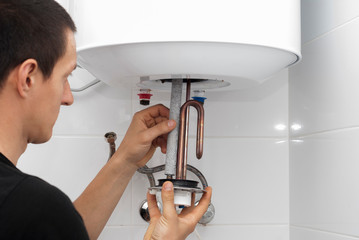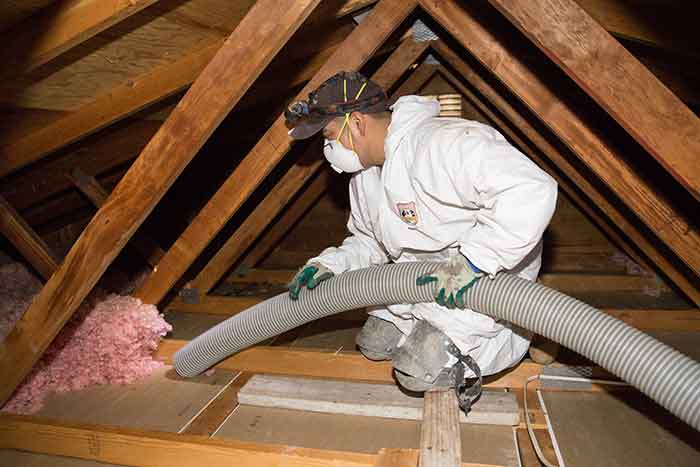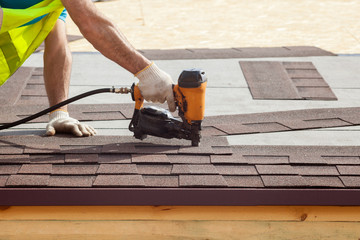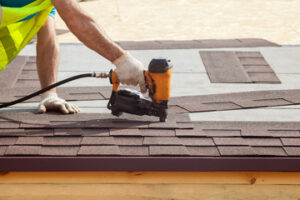While it is possible to perform some maintenance tasks on your water heater, you should leave any major repairs to licensed professionals. Water heaters involve both water and electricity or gas, which can be dangerous to handle without proper training. 
For example, if your water heater is making popping or slamming noises, it may have sediment build-up that needs flushing.
Many homeowners don’t give much thought to their water heater, until it breaks down. A faulty water heater can be disruptive to daily activities and lead to a range of problems. For example, hot showers may be out of the question, and laundry equipment might not be as effective in removing stains. Fortunately, professional technicians can provide cost-effective solutions to repair water heater problems.
They can also help you improve the energy efficiency of your water heater, which can save you money on electricity bills. This can include replacing parts, flushing out sediment that hinders heat transfer, or recalibrating the system for better performance. Energy-efficient water heaters are also more environmentally friendly, as they consume less energy and reduce greenhouse gas emissions.
Professional technicians have extensive experience in repairing water heaters, and they’re familiar with all of the different types and brands. This specialized knowledge allows them to diagnose and repair the problem quickly and efficiently. In addition, they can also recommend ways to prevent future problems and keep your water heater running smoothly.
If you notice that your water heater is making unusual noises, it’s important to contact a professional technician right away. They will be able to diagnose the problem and determine its cause. In addition, they can fix the issue at a fraction of the cost of a new unit.
Water heaters are complex and require special tools to work on them. Professionals use these tools correctly, minimizing the risk of accidents or injuries during the repair process. Moreover, they have the skills to handle tools safely, reducing the risk of damage to the water heater tank or other components.
Some homeowners attempt to save money by performing DIY water heater repairs, but this can end up costing you more in the long run. For example, if your heater is leaking or making loud noises, it may be time to replace it. Water heater replacement can save you money on energy costs and increase the lifespan of your water heater.
When choosing whether to repair or replace your water heater, it’s important to weigh the pros and cons of each option. Water heater repair can be a cost-effective solution for minor issues, but replacement can provide energy efficiency and cost savings.
Warranty protection
Warranty protection is a great way to protect yourself against any unexpected issues that may arise after the repair work is completed. This provides financial security and can help you save money in the long run. However, it is important to understand the terms of any warranty before making a purchase. Some warranties have extensive exclusions, while others offer limited coverage. Moreover, it is crucial to choose a reputable manufacturer and check their reputation online before buying a product with a warranty.
Many water heaters come with a standard manufacturer’s warranty for one year. However, homeowners can also add an extended labor warranty to this. This helps them cover the cost of replacing a water heater in case it fails within the warranty period. The process of claiming a water heater replacement warranty is simple. Homeowners should first contact the manufacturer and explain the problem. They should then follow the instructions provided by the company to submit a claim.
When a water heater malfunctions, it can be a sign of a number of problems. These include temperature fluctuations, strange sounds, and leaking water. These issues can be caused by a faulty thermostat, damaged heating element, or sediment buildup. It is also essential to check the anode rod, which is an aluminum or magnesium rod that collects corrosive elements and prevents corrosion. The anode rod should be replaced every three years.
Water heaters can also be damaged by floodwater or by a broken power supply cable. The best way to prevent such damage is to regularly have the system serviced by a professional plumbing expert. A trusted plumber will perform a thorough inspection of the unit and provide valuable guidance for proper maintenance.
Generally, home warranty (hbw) companies cover water heaters and other household appliances as part of their plans. These plans are aimed at instilling confidence in consumers and helping them make informed purchases. They often provide comprehensive coverage, and include repairs and replacement of electric or gas water heaters. In addition, they usually cover ancillary components like valves and controls.
Water heaters are one of the most commonly purchased appliances, and they can be expensive to replace when they break down. Fortunately, a water heater warranty can reduce your costs and provide peace of mind. These warranties typically include repair and replacement of the entire unit, including parts and labor. Some warranties even provide additional features, such as a replacement of the sediment trap.
Professional diagnosis
If you notice your water heater is acting strange, it may be time to call in a professional. These technicians are experts at identifying issues and providing effective solutions, all while adhering to the highest safety standards. They also use specialized tools that are designed for working on water heaters, which can help them diagnose problems more accurately and fix them without damaging the unit.
If your water heater isn’t producing hot water, it could be due to a broken heating element or a faulty thermostat. It may also be a sign that it is reaching the end of its lifespan and will need to be replaced. In addition, a faulty pressure relief valve can lead to excessive water leaks. Regardless of the cause, it is important to turn off the power supply to your water heater before making any repairs. You can do this by flipping the circuit breaker in your electric service panel. It is also a good idea to test all of the wires with a non-contact voltage tester before proceeding.
Inconsistent water temperatures can be caused by a faulty thermostat, sediment buildup, or a corroded tank. Other signs of a problem include popping or rumbling noises, which indicate sediment buildup and/or a malfunctioning pressure relief valve, respectively. Water leaks from the water heater are a serious problem that should be addressed immediately. If left unattended, they can cause significant damage and expensive repairs.
Leaks from the water heater are often due to a faulty gas valve, loose connections, or internal problems. If you notice any signs of a leak, it’s a good idea to turn off the water supply and contact a professional.
Whether you need Water Heater Repair or a complete replacement, these professionals can provide cost-effective solutions and ensure that your home is safe and comfortable. They are trained to work with a wide range of brands and models and have the experience needed to quickly identify and fix problems. In addition, these experts can offer a warranty on their work to give you peace of mind.
Safety
It’s important to take precautions when repairing or maintaining your water heater. You should always create a fire-resistant work area, and make sure that the site is free of combustible materials such as curtains or paper. Also, you should keep a fire extinguisher nearby and familiarize yourself with its operation before beginning the repair process. Lastly, never attempt to work on a hot water heater with children or pets nearby. They may try to play with the water or reach into hot areas, leading to dangerous injuries.
Water heaters involve electricity and gas, making them a potential fire hazard. Although some simple issues, such as a tripped circuit breaker or pilot light that’s out, can be handled by homeowners with a bit of DIY experience, you should hire a professional to handle complex problems like significant leaks and gas valve issues. This will ensure that the problem is addressed quickly and accurately, and it will comply with safety regulations.
You should also regularly check the anode rod, or sacrificial rod, which is located inside the tank. This rod collects corrosive elements and keeps the metal parts of the water heater from rusting. It should be replaced every three years or so. If the rod is caked with calcium or rusted, it needs to be replaced. This can be done by turning off the gas supply to the water heater, removing the old rod, and replacing it with a new one.
Many modern water heaters are designed with diagnostic alerts that notify the homeowner when an issue arises. This can help you save money and avoid expensive repairs or safety hazards. Additionally, most of these models can be monitored via an online interface or app.
If you have an older water heater, it’s important to inspect it regularly for signs of damage or wear and tear. You should also check the pressure relief valve, which protects the water heater from excessive pressure or temperature. If this valve isn’t working properly, it could lead to explosions or unnecessary water damage. It’s essential to clean the relief valve every few months by removing sediment or residue, and ensuring that it’s working correctly.






